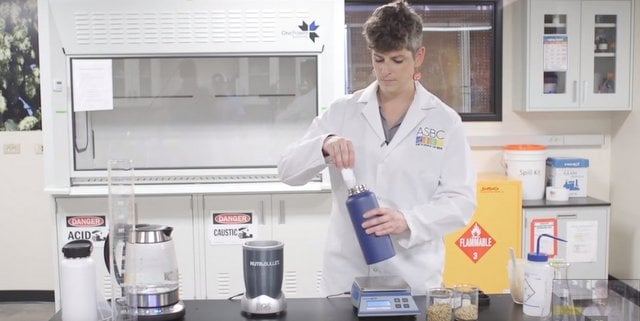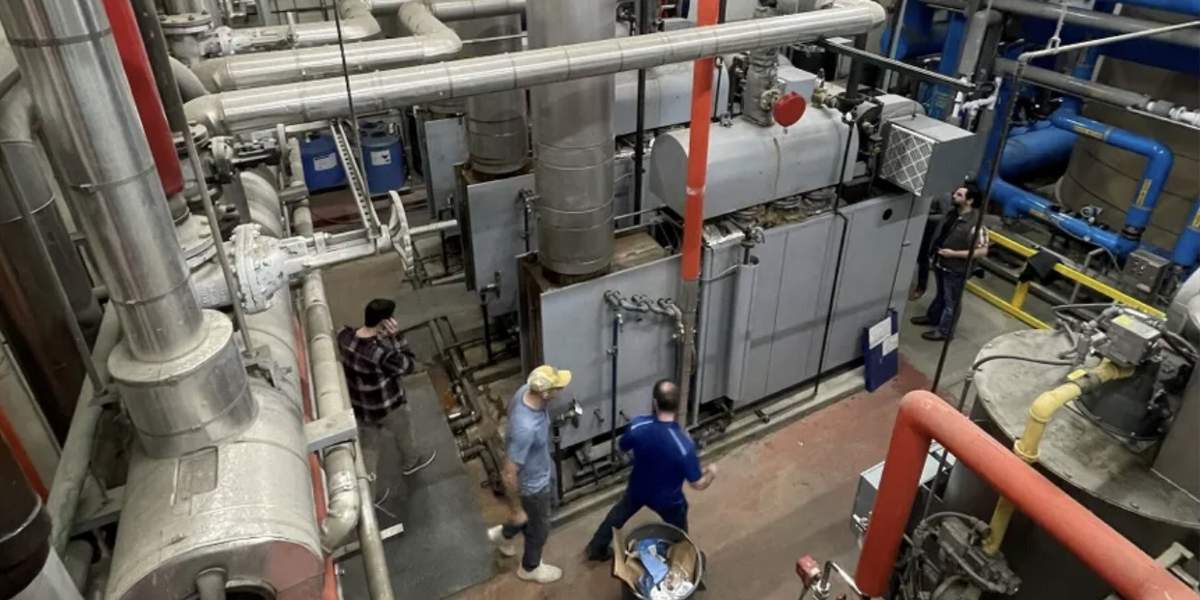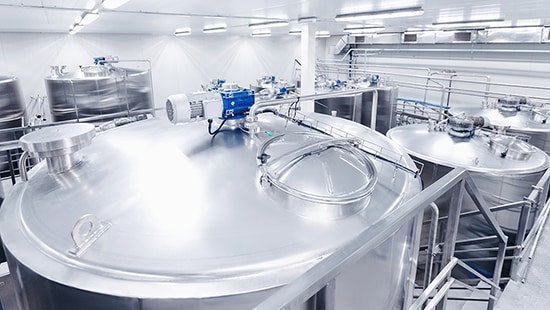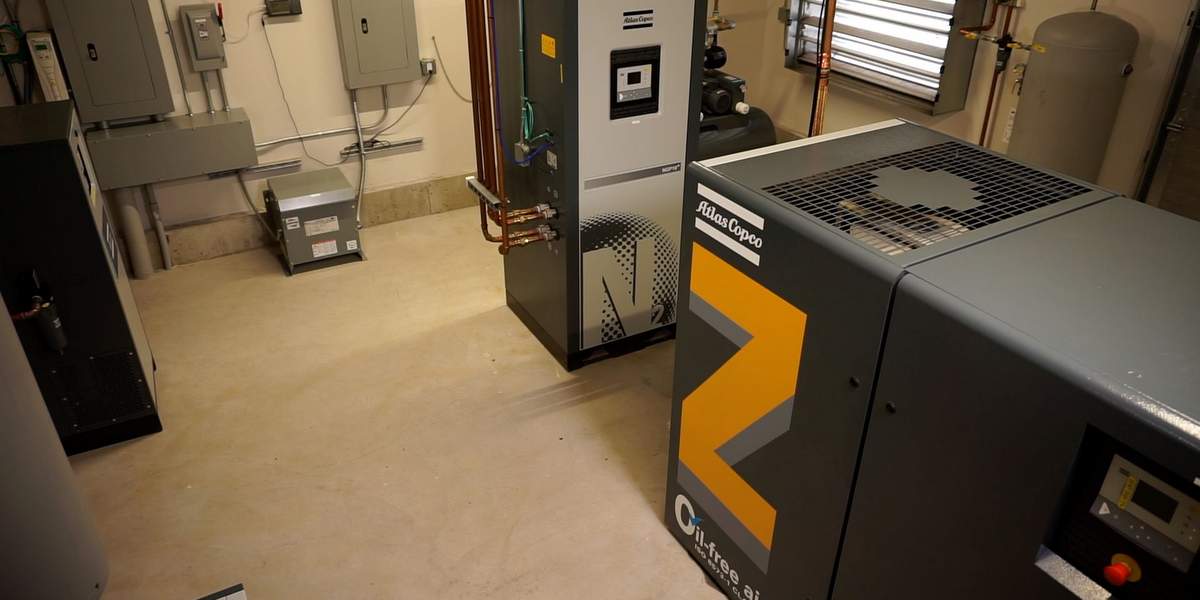You heard it on the BrewExpo America exhibit hall floor and echoing through the massive seminar rooms at the Craft Brewers Conference. You heard it at breakfast and at the after-Expo events. Sure, there was plenty to see and talk about at CBC 2014, but there was one topic that was on the tip of every attendee’s tongue: Quality.
Brewers Association Director Paul Gatza explained it best when he said that craft beer is gaining steam in part because of the consumer’s interest in quality, and if the new supply matching that demand can’t live up to that consistent quality, the industry overall could feel the effects. Practically every craft brewer is a proud artisan of his or her own craft beers, but in commercial craft brewing, quality issues crop up. At CBC, more than 400 brewers packed a standing room-only seminar room to open a brewer dialogue focused on how to work together to address quality concerns.
Rick Blankemeier, Stone Brewing Co. quality assurance supervisor, Robert Christiansen, Avery Brewing Co. quality assurance manager, and Kelly Tretter, New Belgium Brewing Co. microbiologist and micro lab manager, took the stage during the seminar entitled, “Three ways to quality: How three breweries of different sizes diagnose and solve QA/QC issues.” Before establishing a meaningful and honest dialogue, Blankemeier stated bluntly: “We all have our different quality issues that we solved in the past or we’re currently experiencing…Whatever problems come your way — and there are eventually going to be quality problems with your brewing systems and processes — it’s important to open that dialogue between breweries where you can actually get together to talk about the problems you’re having and solving them as quickly as possible.”
A big focus of the seminar was root cause analysis. It’s basic quality assurance: you have a problem, you define it, troubleshoot it and, hopefully, fix it. The first step toward fixing a beer quality problem is also the most difficult — You have to admit that you actually have a problem.
“The first thing is you have to check your ego at the door,” Blankemeier said. “Basically, what we want to discuss is not being too embarrassed to talk about an issue because all of our breweries have either been through it or are currently dealing with it. The more we can get involved and contact each other, bounce ideas off each other, the more quickly we solve the problem.”
It’s not the problems that define the quality of your business, it’s how you respond to them. Once your problem is defined, Blankemeier recommended being as specific as possible about what issue you are facing. You can quickly slide down a slippery process-revamping slope trying to change too many variables at once. Clearly define your specific problem, then analyze that issue. Finally, figure out all the variables you can change to address the problem and only change one at a time.
“You don’t want to make a ton of changes to your process right away and ask, ‘Which one of those actually fixed that problem?’” Blankemeier explained. “You want to write an operating procedure around that and standardize it. If the problem happens again, you want to repeat the solution. If it doesn’t work, you repeat the process to find your solution.”

Craft beer quality case study
Avery Brewing’s Robert Christiansen gave attendees a look behind the brewery curtain to detail how Avery Brewing addressed a quality complication after installing a new centrifuge.
“It was a new piece of equipment and we worried about: How are we going to clean it? How do our cleaning cycles work? How do we verify all this cleaning?” Christiansen began. “Being a small brewery without a lot of analytical equipment, we had plates. We over plated — the inlet of the centrifuge, the outlet of the centrifuge, inlets and outlets of paper filters we had downstream, bright tanks, bottles. We made sure we had this huge regime going on, which was probably overkill, but we did it for the sake of quality.”
Once in place, the centrifuge was paying off. “We got higher yields, our beer was hoppier, everyone was stoked…and then we started getting dirty plates in the lab pretty soon after we instituted the centrifuge,” Christiansen said.
The centrifuge plates were the first ones that exhibited growth, but there was also growth on the plates from paper filters, bright tanks and bottles.
“Because we did so much plating, we could see the diminishing effect. The growth was greatest at the centrifuge. That led us to believe that there was something going on with cleaning,” Christiansen explained. “We popped the hood and it was pretty bad.”
Christiansen displayed a picture of the discharge outlet side of the bowl where the growth had overtaken about a fourth of one side.
Know your brewery, know your equipment, know the parts that you can get an infection in and know that it’s possible that if one guy makes an error, it can foul up your beer or system or piece of equipment. — Robert Christiansen, Avery Brewing Co. quality assurance managerThe brewery’s first step was having the protocol in place to diagnose a problem by being proactive instead of reactive. Christiansen explained that the team identified the variable control points and, through their process, discovered that the cleaning was insufficient in the way the discharge was timed, the way CIP was running, and in the concentration of the chemicals. Those led to the caking on the outside of the centrifuge bowl. Avery ended up changing its cleaning chemical of choice, almost quadrupling the strength compared to what the brewery was using.
“The big thing for us was being able to pinpoint this and then have a process in place in our manual brewery,” Christiansen said. “At this time we were much smaller than we are now and I was the only lab person. We had all these things stacked against us, but since we had such a big commitment to quality, we were willing to put all this effort and time into troubleshooting something before it was a problem.”
Christiansen took a moment to address smaller brewers in the room who may just be getting started:
“I know there’s a lot of brewers here who think they can’t relate to a 50,000-barrel [bbl] brewery size. But we have all manual connections at our brewery. Everything is tri-clamp connections, a few lines we do have are soft connected to our equipment. We have the same issues we had when we started as a 10,000-bbl brewery, it’s just that we’ve learned how to overcome them. The conditions that we brew, filter, package and do our everyday business in, it’s the same way that most of you guys are doing this. Our theme is: Take what you have and make it work for you, regardless of the circumstances or money. Won’t lie to you — quality assurance is not cheap, but there is problem solving and knowledge you can have about your own beer and processes that can prevent so many problems. Its important to be able to diagnose those in a manner that works well.”
One of the best resources for quality assurance, according to Christiansen, isn’t a piece of equipment, it’s the relationship a brewery has with its suppliers and equipment manufacturers. It’s important to have an open dialogue with your suppliers and manufacturers and a relationship that allows you to pick up the phone and have someone on the other end who will help you work out your issue.
Another key to Avery’s quality success: Knowing the cleaning chemicals and how they work.
“When i started working at Avery, there was some acid, some caustic and sanitizer, and I was told to use them in these amounts and it will clean this,” Christiansen recalled. “I don’t think any one of us fully understood the cleaning properties and how they worked. So we had a presentation from our chemical guy to explain how they worked and then everyone understood. That was huge.”
As the craft beer segment becomes more competitive with more brewers entering the market, it is now more important than ever to focus on your commitment to beer quality. Consumers turn to craft beer for its quality as much as for its uniquely exciting beer experience. The morale to the story, as Christiansen closed:
“As our headbrewer likes to state, ‘We’re making beer, not saving babies.’ So, if you have a bad batch of beer, that’s OK. It’s beer. Please don’t sell that beer to other people, but it’s good to be able to say, ‘that was a bad batch’ and then solve the problem.”






RT @CraftBrewingBiz: What’s in your craft beer? Quality assurance for breweries of all sizes: http://t.co/yFbPdgmkV0 #sundayreading
Quality assurance for breweries of all sizes – Craft Brewing Business http://t.co/iIUejZ9nbe via @craftbrewingbiz @higherfragrance
Brewery Insurance Program liked this on Facebook.
What’s in your craft beer? Quality assurance for breweries of all sizes. http://t.co/FIJo6ejh7k via @craftbrewingbiz
Quality assurance for breweries of all sizes – Craft Brewing Business http://t.co/Yu6JSUAoPA via @craftbrewingbiz
RT @CraftBrewingBiz: What’s in your craft beer? Quality assurance for breweries of all sizes: http://t.co/yFbPdgmkV0 #CraftBeerQuality
RT @crsimp01: Quality assurance for breweries of all sizes – Craft Brewing Business http://t.co/oLlSoxDb3W via @craftbrewingbiz
RT @CraftBrewingBiz: What’s in your craft beer? Quality assurance for breweries of all sizes: http://t.co/yFbPdgmkV0 #CraftBeerQuality
Quality assurance for breweries of all sizes – Craft Brewing Business http://t.co/oLlSoxDb3W via @craftbrewingbiz